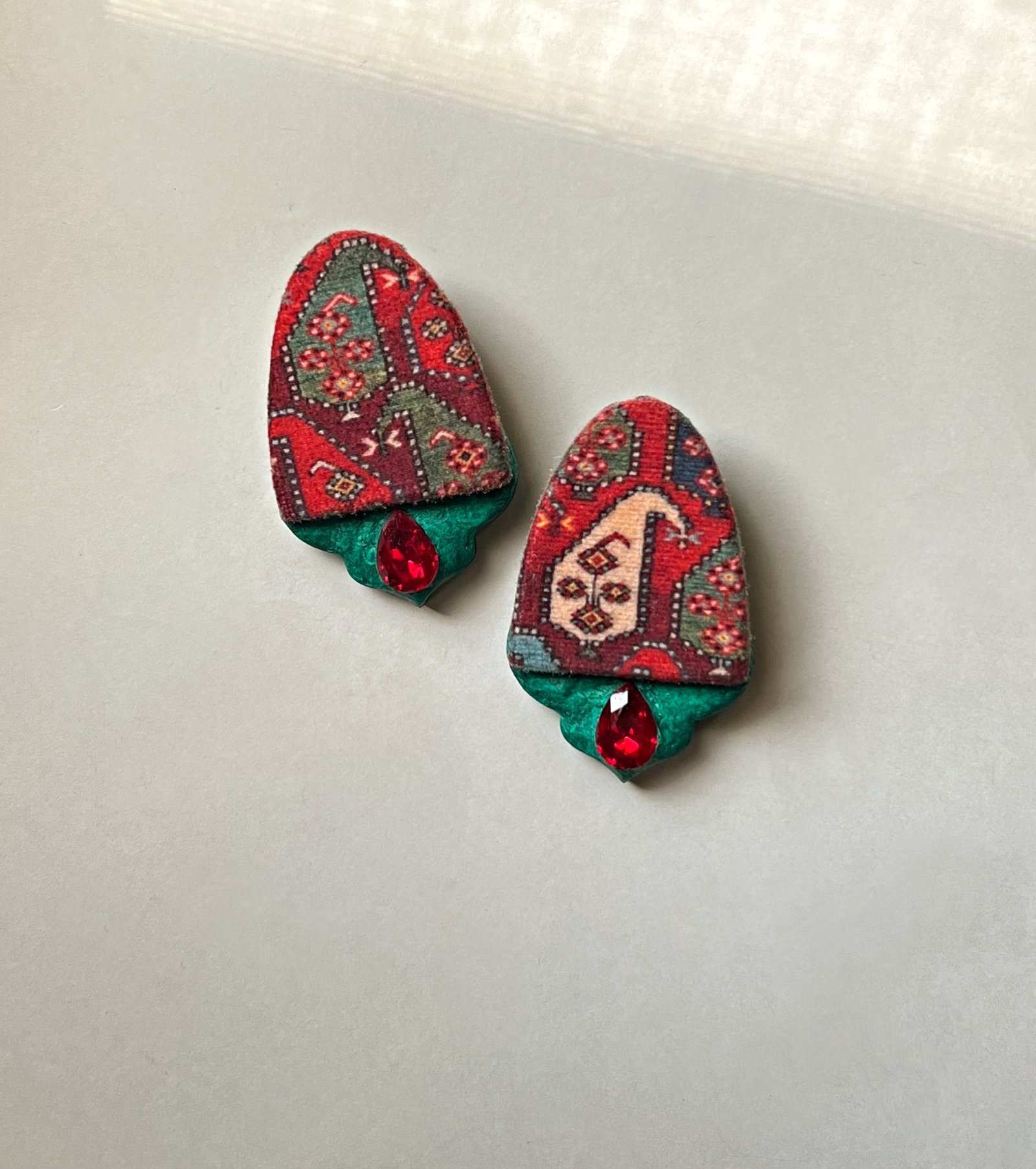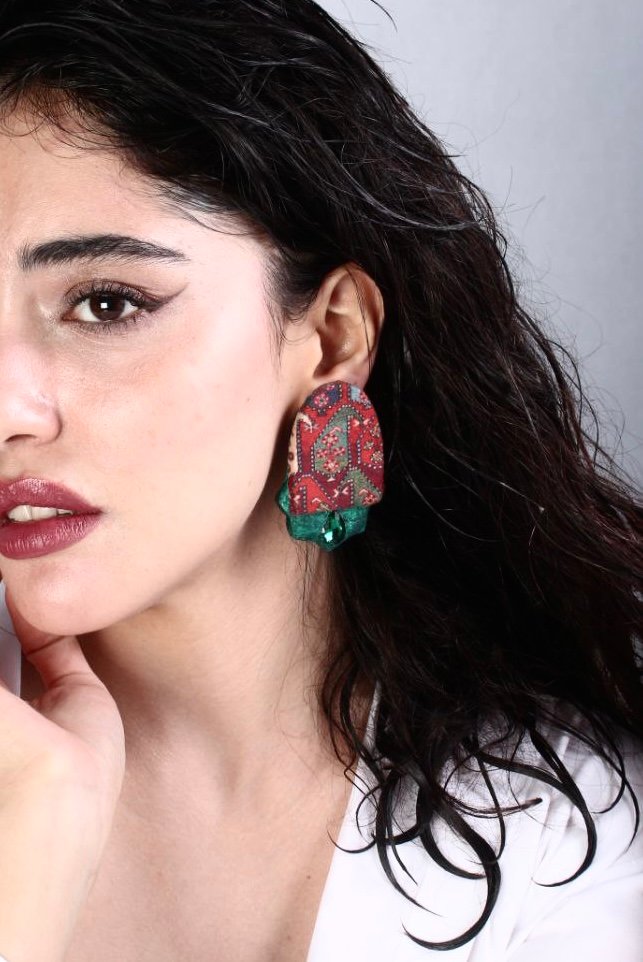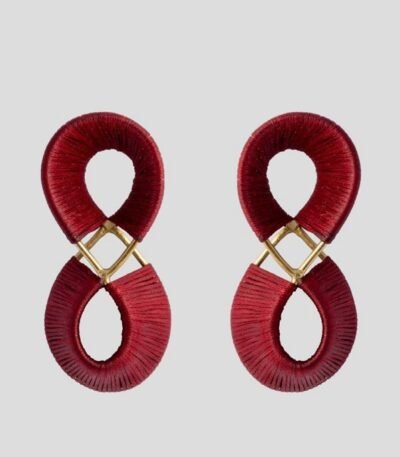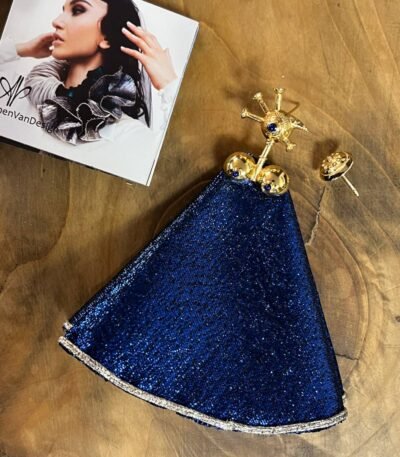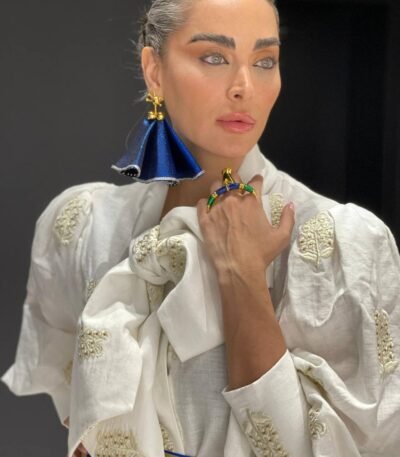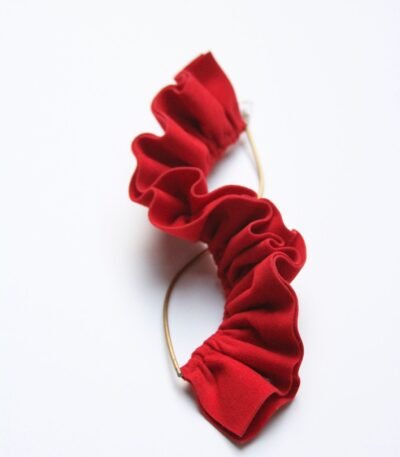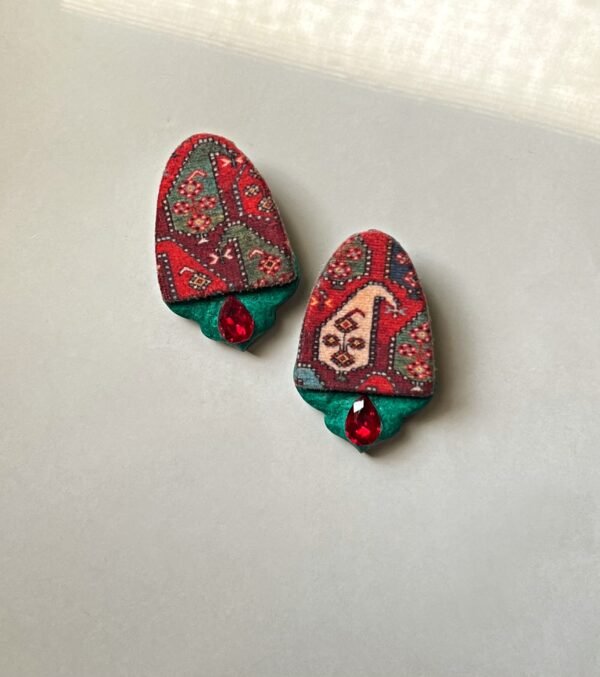Product Attributes
| Weight | 28.5 g |
|---|---|
| Dimensions | 9 × 9 × 5 cm |
| Design Style | |
| Color |
Blue ,Green ,Red |
| Material | , , |
Description
Many designers and researchers of ancient and ritualistic art consider the “Boteh Jegheh” to be a symbol of Zoroastrian eternal life.
The bent shape of the cypress tree also signifies humility. Floral-inspired designs emerged during the Sassanid period and later during the Safavid dynasty. The Qajar and Pahlavi periods then gave rise to the primary styles of Iranian textiles. In those times, royal insignia and jewelry, in addition to the crown and court attire, were adorned with the motif of the “Boteh Jegheh” to decorate public textiles.
The first Aryan people flourished together in South Asia and the Iranian Plateau, a region where they eventually shared many linguistic, cultural, and even religious similarities. The ancient Iranians followed the Zoroastrian faith. Some scholars believe that Zoroastrianism was one of the earliest historical influences on the design of the cypress tree and the “Boteh Jegheh” as an ancient religious symbol. However, the first clear and distinct designs of what we now call “Boteh Jegheh” can be seen in motifs from the Sassanid period. Boteh Jegheh earrings.

